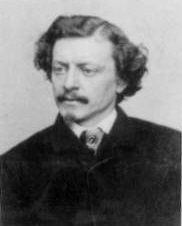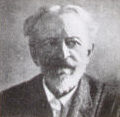Although Samuel Colman’s name is often spelled with an “e,” the family spelled the name “Colman,” and the Aldine Press in its art column (1868-79) referred to the artist as Colman. He studied under Asher B. Durand and became an associate of the National Academy of Design in 1854 and a full academician ten years later. In 1866 he helped found the American Society of Painters in Water Colors and was its first president. He became interested in etching in 1867 and, in 1877, at the founding of the New York Etching Club, exhibited a number of landscape etchings.
Colman spent the summer of 1856 in Jackson, NH, sharing a studio with his brother-in-law, Aaron Draper Shattuck. The Crayon of that year noted: “Mr. Colman has made wide advances on all his previous studies … He has a study of Mote [sic] Mountain and the Ledges at North Conway, with a wheat-field in the foreground.”
As early as 1853, he exhibited at the National Academy of Design and shortly thereafter at the Boston Athenaeum. He was also a frequent exhibitor at the Brooklyn Art Association.
In 1867, Henry Tuckerman wrote of Colman, “to the eye of refined taste, to the quiet lover of nature, there is a peculiar charm in Colman’s style which, sooner or later, will be greatly appreciated.” Implicit in Tuckerman’s statement is his observation of a strong individualism in Colman’s style.
He visited Spain and Morocco and painted scenes in a combination of pastel and gauche. He was a partner of Louis Comfort Tiffany in interior design and worked on Samuel Clemens’s house in Hartford, CT. For a time he was a member of the Century Association but resigned in 1884. Colman’s paintings are represented by the collections of the Metropolitan Museum of Art, the National Museum of American Art, the Art Institute of Chicago, and the Union League Club among other prominent collections.
- 1864
- 1867
Photo Credit Lower Right
Courtesy of the Metropolitan Museum of Art, NYC
References
New Hampshire Scenery
Questroyal Fine Art




